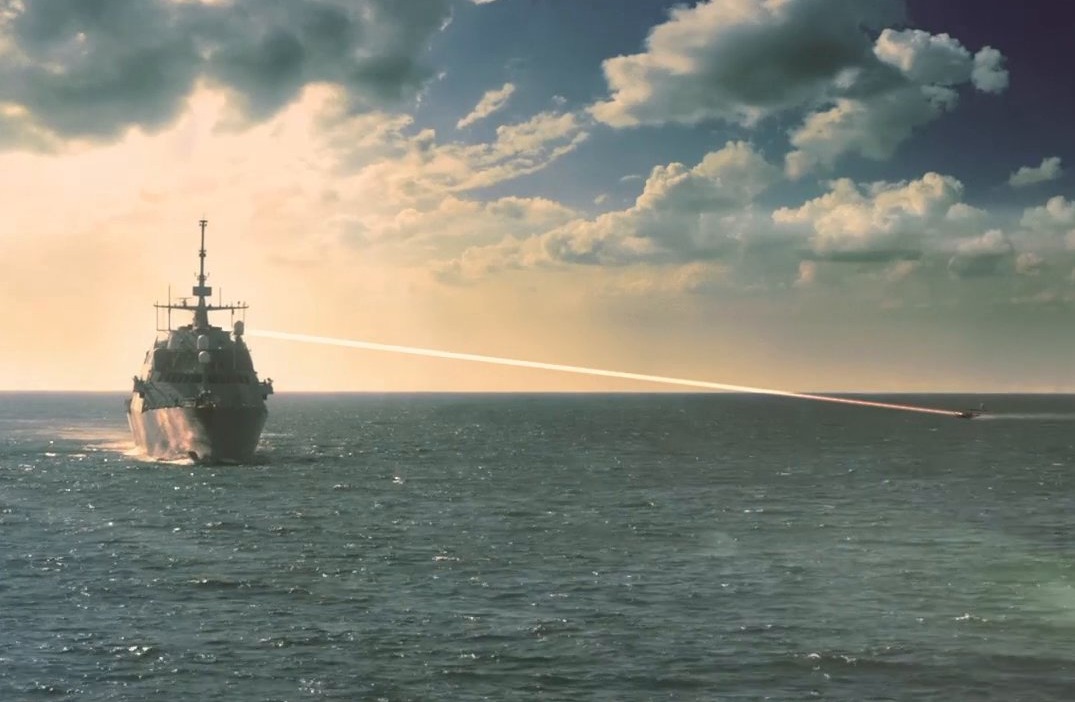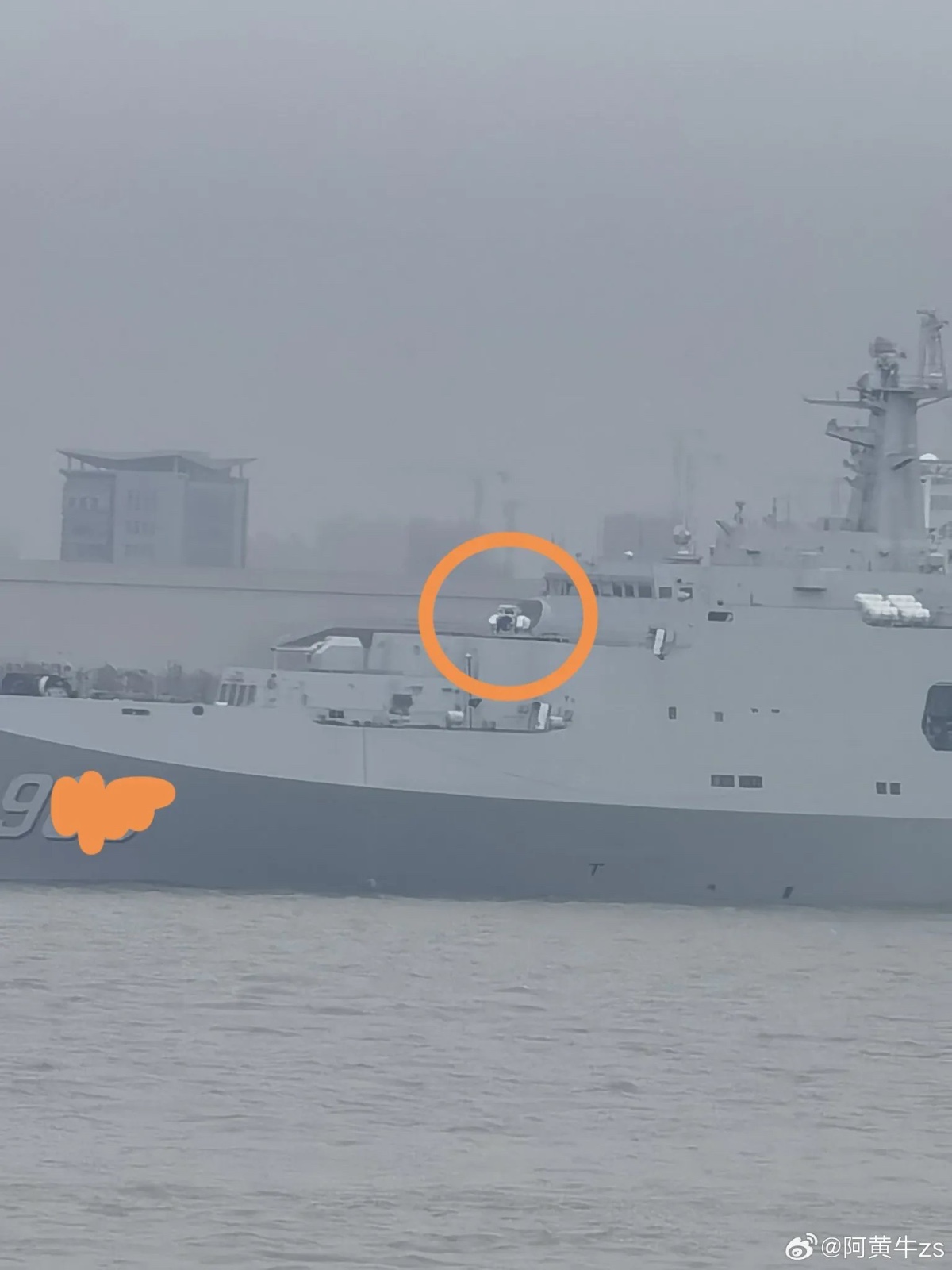A Chinese Navy missile boat directed a military-grade laser at a Philippine aircraft over the South China Sea, seemingly as part of an ongoing intimidation campaign against Manila amid rising tensions between the two nations.
A Bureau of Fisheries and Aquatic Resources (BFAR) aircraft conducting maritime surveillance on September 28 over the West Philippine Sea was reportedly targeted three times by a Chinese Navy missile boat using a “high intensity” laser, endangering the crew of the Filipino aircraft.
A summary report from BFAR shared with the Inquirer states: A BFAR Cessna patrol aircraft spotted a Chinese coast guard vessel with bow No. 21555 and two navy Type 22 Houbei-class missile boats chasing two BFAR vessels (BRP Taradipit and BRP Romapenet) near Hasa-Hasa Shoal. The shoal is a feature located just about 111 kilometers off Palawan.
Shortly after, the BFAR aircraft was targeted by a laser beam from one of the Chinese Navy’s two missile boats. The BFAR pilots radioed the Chinese vessel to request they cease firing the laser but received no reply.
Instead, about five minutes later, one of the Chinese missile boats fired two more laser shots. According to the report, the “high-intensity white light” that the laser produced caused extreme discomfort in the pilot’s eyes.
The incident has triggered a fierce reaction in Manila. The National Maritime Council said on October 1 that the People’s Liberation Army-Navy (PLAN) firing a laser at a Bureau of Fisheries and Aquatic Resources (BFAR) aircraft in the West Philippine Sea was a serious matter for the Philippines.
In a message to GMA News Online, the NMC spokesperson, Undersecretary Alexander Lopez, termed the incident a “gross violation of international laws,” including the UN Convention on the Law of the Sea (UNCLOS).
”We don’t take this lightly, as such irresponsible, dangerous, and provocative actions conducted well within our EEZ impacts on the safety and security of overflights in our maritime domain, notwithstanding a gross violation of international laws and the UNCLOS,” Lopez said.
China’s Type-22 or Houbei-Class missile boat also chased the BRP Romapenet on September 27, with the crew of ABC-CBN news outlet aboard.
The Type 22 Chinese missile boat is designed to operate in China’s littoral zone and conduct coastal patrols. It can carry twelve crew members and is armed with eight anti-ship missiles, making it a significant threat.
This is not the first instance of a Chinese aircraft harassing a Filipino aircraft conducting a routine patrol over the South China Sea. Recently, there has been a noticeable increase in such incidents, triggering concerns of an escalation.
In August this year, a Philippine fisheries bureau plane was threatened by laser flares shot from a Chinese island base. As the BFAR Cessna 208B Grand Caravan aircraft approached Subi Reef, it observed flares being fired from the fishing atoll, which China has transformed into a militarized island base.
Laser Showdown! U.S. Navy Deploys Directed Energy Weapons-Armed Warship In Japan Amid China Threats
China’s use of military-grade lasers is not limited to use in the air. In February 2023, China was accused by the Philippines of training military-grade lasers at a ship to scuttle a resupply mission to a marooned Filipino ship at the disputed Second Thomas Shoal.
WATCH: In an act of "blatant disregard" of the Philippine sovereign rights, the Philippine Coast Guard shares video of Chinese Coast Guard vessel pointing "military grade" laser towards PCG vessel, causing "temporary blindness" of its crew. | @JEMendozaINQ pic.twitter.com/u2GdTd9rwg
— Inquirer (@inquirerdotnet) February 13, 2023
China, nonetheless, has a history of deploying military-grade lasers or dazzlers to intimidate foreign aircraft.
In May 2024, Australia alleged that China fired flares in the path of an MH-60R Seahawk helicopter, which was flying over international waters of the Yellow Sea on an international patrol.
This marked the second occasion when the Australian crew faced a threat from a Chinese laser. In May 2022, a J-16 aircraft of the PLA Air Force reportedly fired these lasers at an Australian P-8A flying over the South China Sea.
China has also shone military lasers on US pilots. In 2018, the Chinese military stationed in Djibouti was accused by US officials of threatening US pilots with a laser fired at a US C-130J aircraft. Later, in 2020, the US Navy accused China of firing a military-grade laser at its P-8 Surveillance aircraft flying over the Pacific.
Military-grade laser beams, sometimes known as “dazzlers,” create powerful beams of light that can travel enormous distances and can temporarily blind pilots by illuminating aircraft cockpits. It is considered extremely dangerous for pilots to be dazzled by the dazzlers. China has widely adopted lasers to intimidate pilots flying over international airspace.
Besides using military-grade lasers to blind pilots, China is also working on laser weapons capable of destroying targets in the air. Meanwhile, the US has deployed its warship equipped with laser weapons to Japan in its bid to deter China.
Laser Showdown In The Indo-Pacific
The US Navy has dispatched a warship outfitted with a cutting-edge laser weapon for deployment in Japan in response to growing Chinese military action in the Indo-Pacific.
On September 22, the US Navy destroyer USS Preble, armed with the latest US laser weapon, departed San Diego and headed toward Yokosuka, Japan. The deployment was announced on August 1 in an official statement: “The Arleigh Burke-class guided-missile destroyer USS Preble (DDG 88) will move to Yokosuka, Japan, as part of a scheduled rotation of forces in the Pacific.”
The USS Preble is the only destroyer in the U.S. military’s 73-ship Arleigh Burke-class that has a high-energy laser armament that can be used to shoot down drones and missiles.
The USS Preble’s High-Energy Laser with Integrated Optical Dazzler and Surveillance System (HELIOS) is a 60-kilowatt-class directed energy laser weapon.
HELIOS is a multipurpose system powerful enough to destroy or severely damage smaller boats and drones, among other targets. It can also function as a “dazzler” to disorient or blind optical seekers when a missile, hostile ship, or aircraft approaches using optical sensors.

The deployment came a month after a photograph of the Type-071 Amphibious Assault Ship of the People’s Liberation Army Navy (PLAN) equipped with laser weapons was published on social media, triggering speculation that the latest Chinese Directed Energy Weapons (DEWs) were undergoing testing.
Ream Naval Base Not For China; US Warships Welcome At Cambodia’s Beijing Aided Port – Deputy PM
An image of an amphibious transport dock ship Type 071 with a laser weapon was posted on the social media site X. The system appeared to be mounted just below the recently renovated bow’s 76mm dual-purpose gun.

Experts have observed that the laser weapon is likely being tested on the Type 071, with the potential for future deployment on other warships. After the trial testing, it could also be deployed on the Type 075 and Type 055 vessels. These two vessels are expected to play a crucial role in future operations in Taiwan.
An expert who did not want to be named told EurAsian Times: “I think it’s probably a DEW in the late stages of testing out on the ship, and probably relatively bespoke, indicating it’s probably somewhat mature. Everyone is working on DEWs/ lasers. The product on the 071 is not unexpected. We’ve been expecting something like this for a few years now, and they have a variety of land-based DEWs that have already been developed and sold.”
This information could not be verified as China’s military programs typically remain shrouded in secrecy. Nonetheless, it is anticipated that laser weapons will soon be introduced on Chinese warships.
- Contact the author at sakshi.tiwari9555(at)gmail.com
- Follow EurAsian Times on Google News




